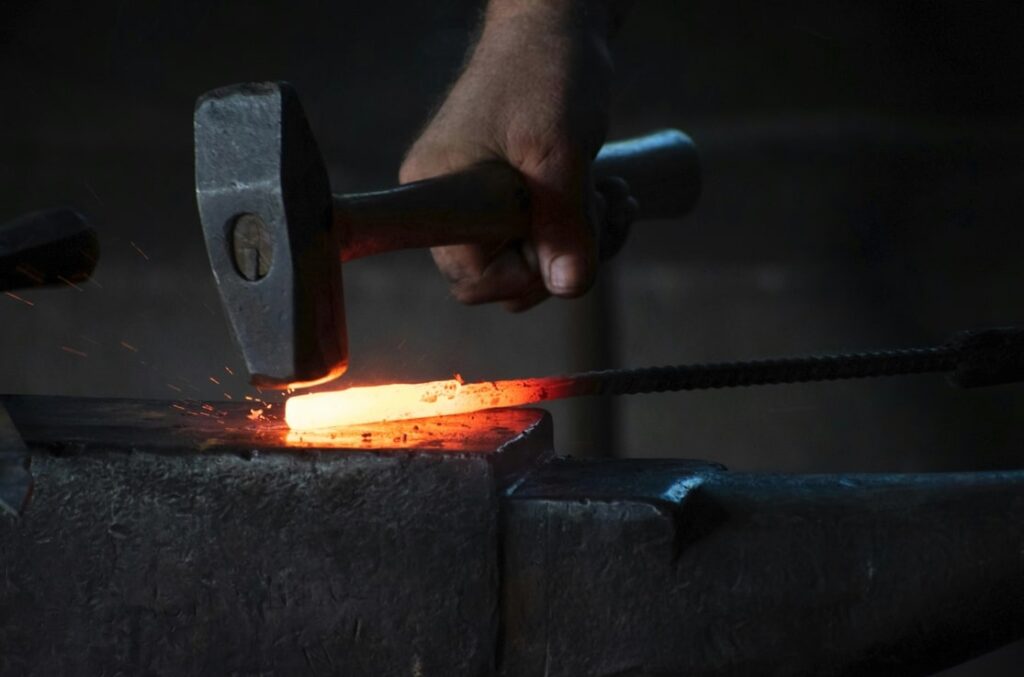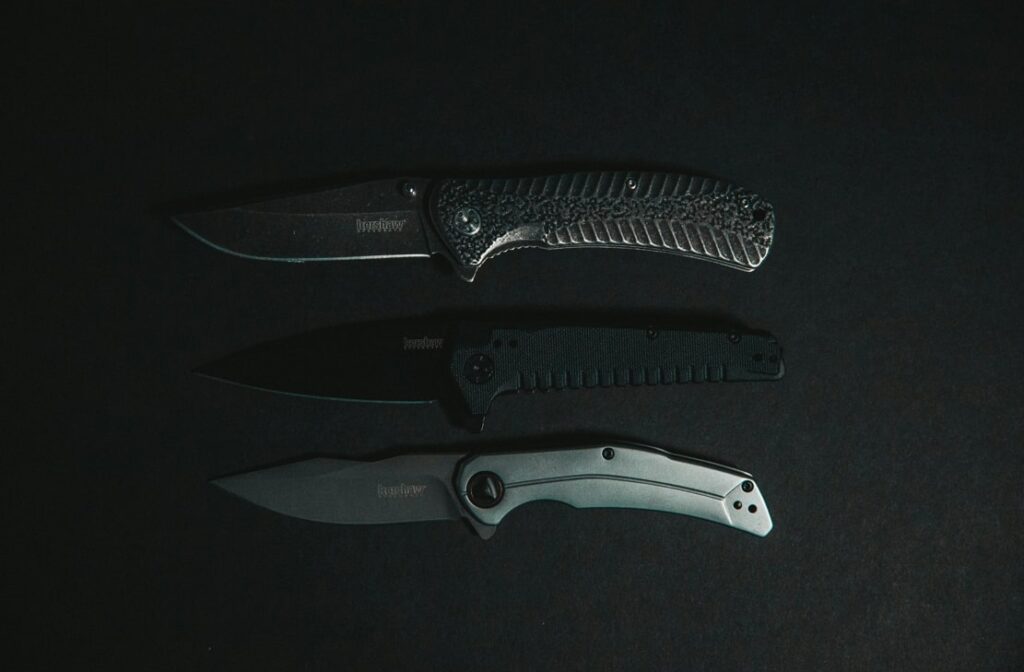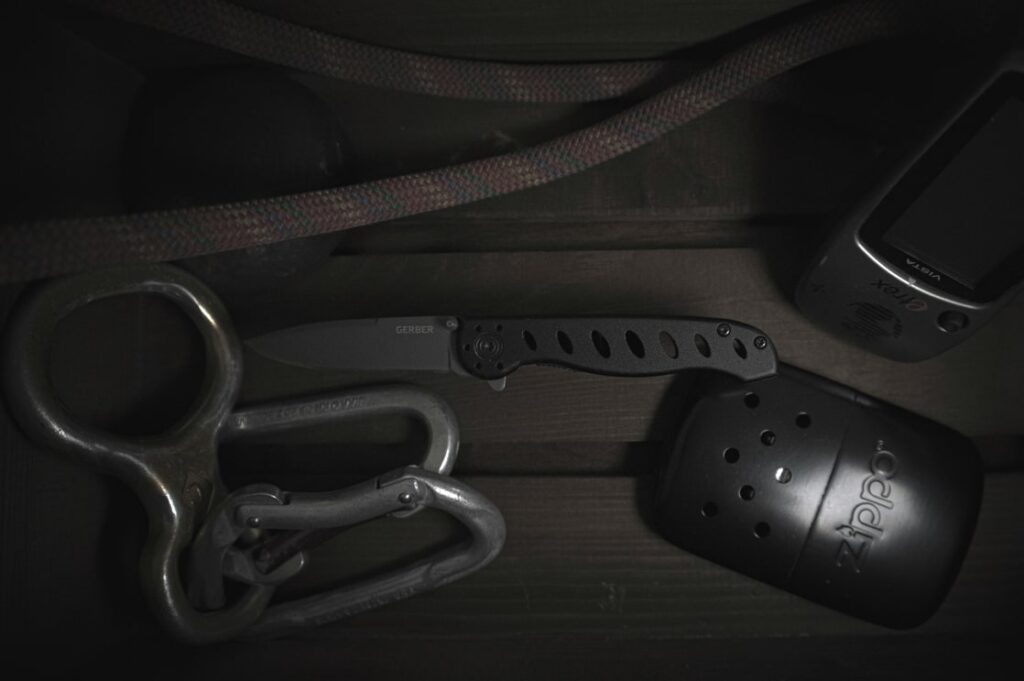Pocket knives are versatile tools that have been an essential part of everyday carry gear for centuries. They cater to a variety of uses, from opening boxes to cutting rope, and even preparing food while hiking or camping. Different pocket knife opening mechanisms have been developed to offer convenience, safety, and speed. These mechanisms vary from simple manual methods that rely on your physical effort to more sophisticated systems that allow for quick, one-handed opening.
Some common pocket knife opening mechanisms include the nail nick, the thumb hole, thumb stud, and flipper, each with its unique method of operation. Understanding these opening mechanisms will help you choose a pocket knife that fits your preferences and needs, ensuring you have a tool that is not only functional but also enjoyable to use. As you consider the options, think about how you’ll carry and use the knife to determine the best opener for you. Whether you prioritize ease of opening, safety, or speed, there’s a mechanism designed to meet those specific requirements.
Evolution of pocket knife opening mechanisms
Pocket knife opening mechanisms have transformed significantly over time, with innovations enhancing both speed and safety. Your understanding of these mechanisms is crucial as they determine the functionality and practicality of the knife.
Dating back to the 1600s, Solingen, a city in Germany renowned for its blades, pioneered some of the earlier advancements in pocket knife mechanisms. Craftsmen from Solingen innovated the classic slip-joint mechanism, a common methodology for securing the blade in place when open, which set the standard for many pocket knives.
In the 18th and 19th centuries, American manufacturers began to contribute to the development of pocket knife opening mechanisms. Notably, these manufacturers introduced various locking mechanisms, which allowed for safer operation and handling.
In the 20th century, automatic knives, also known as switchblades, stormed onto the scene. With the press of a button or a switch, the blade springs open. While these knives faced legal restrictions, they represented a significant leap in the ease of opening mechanisms.
Today, you’ll find an array of common opening mechanisms in pocket knives, ranging from manual to assisted-openings, each catering to different user preferences and legal constraints. Manufacturers continue to innovate, striving for the balance between rapid deployment and safe handling.

Start Working with a Professional Now
Types of pocket knife opening mechanisms
Pocket knives incorporate a variety of opening mechanisms suited to different user preferences and legal restrictions. You’ll encounter manual, automatic, and assisted mechanisms, each with unique features for safety and convenience.
Manual opening mechanisms
Your pocket knife may include a manual opening mechanism, which requires you to open the blade using physical force, with no spring or automatic system to aid in the blade deployment. Common types include:
- Thumb stud: A small protrusion on the blade which allows you to push the blade out with your thumb.
- Thumb hole: A hole in the blade designed to provide grip for your thumb and facilitate opening.
- Nail nick: A small indentation on the blade where you can insert your nail to pull the blade out manually.
Automatic opening mechanisms
With automatic opening (or switchblade) knives, a spring mechanism is released at the push of a button or switch, causing the blade to open quickly.
- Button trigger: Pressing this button releases the blade.
- Switch: Similar to the button, a switch is flicked to open the blade.
Assisted opening mechanisms
Assisted opening knives cleverly combine manual effort with an internal mechanism to deploy the blade with ease.
- Spring mechanism: A spring partially opens the blade after you start the process manually.
- Flipper: A tab on the back of the blade that, when pulled, activates the spring mechanism for blade deployment.
Dual-action
Dual-action knives offer both manual and automatic opening options in a single knife. You can choose either method to open the blade based on preference or legal requirements.
Opener 1. Flipper

The flipper opener was first introduced by Harold Joseph ‘Kit’ Carson in his CRKT M16 pocket knife design. When you handle a pocket knife featuring a flipper mechanism, you engage a small protruding tab that extends from the closed blade. Your index finger typically engages the flipper tab, which often requires a light press-down and back motion to initiate the blade’s rotation and unlock the knife.
The flipper mechanism’s design promotes safety and ergonomics, as it keeps your fingers away from the blade’s path when opening. Additionally, flippers often incorporate detent balls to secure the blade when it’s in the closed position, adding an extra layer of safety to prevent accidental opening.
Opener 2: Thumb Hole
The thumb hole is a common and efficient opening mechanism found on many pocket knives. It is a simple, round opening on the blade that allows you to deploy the knife with just your thumb. This method is preferred by many for its straightforward operation and reliability. For ease of use, you place your thumb in the hole, apply outward pressure, and pivot the blade fully until it locks.
The advantages of the thumb hole include accessibility, as it is easy to use with either hand, control, offering a high degree of maneuverability, and being glove-friendly, allowing operation while wearing gloves.
Design variations encompass size, ranging from small to large for different thumb sizes, shape, which can be circular, oval, or uniquely shaped for aesthetic appeal, and position, balancing quick access and accidental opening prevention.
Opener 3: Thumb Stud
The thumb stud is a predominant feature in the functionality of many pocket knives, appearing as a small protrusion on one or both sides of the blade. When engaged, the thumb stud enables a one-handed opening method that is both efficient and quick.
In terms of placement, the thumb stud is typically located near the base of the blade, ensuring easy accessibility for your thumb. To operate, position your hand so your thumb rests against the stud, apply outward pressure, and smoothly rotate the blade from the closed position. Continue until the blade is fully extended and securely locked into place.
Advantages of the thumb stud include enabling one-handed operation, providing speed and convenience, and usually being ambidextrous, catering to both right and left-handed users.
Materials for thumb studs generally complement the blade material, often made from metals like stainless steel or aluminum, ensuring durability and longevity. Design variations may include aesthetic details, although most thumb studs are simple and functional, potentially altering the tactile feel.
Opener 4. Button
When you encounter a pocket knife with a button mechanism, you’re handling a knife that features a convenient and quick method of blade deployment. The button, situated on the handle, is pressed to initiate the opening operation. This mechanism is designed for single-handed operation, and safety features. The blade securely locks into place when fully extended.
When considering the use of knives with button mechanisms, they are ideal for tasks requiring quick one-handed access. Safety is paramount, so it’s important to ensure the knife has a secure locking feature to prevent accidental closure during use. Additionally, be aware that button-operated knives may be subject to restrictions in some areas due to their automatic nature.
Maintenance is crucial for reliable performance. Dust and debris can hinder the mechanism, so regular cleaning is recommended. Always follow the manufacturer’s guidelines to ensure your knife functions properly and safely.
Opener 5. Front flippers

Front flippers represent a modern and innovative approach to pocket knife deployment, providing a quick and efficient method for opening your blade.
Distinguished by a small tab or lever located on the blade near the pivot point, front flippers require a specific technique for use. To deploy the knife, you hold the handle in one hand with the front flipper tab facing you. Applying pressure upward or outward with your thumb or index finger, the blade will swing out and fully extend, engaging the lock.
These front flippers come with several advantages. They maintain a slick profile when closed, are suitable for both right and left-handed users, and are less likely to snag on pocket material. However, they do have their drawbacks. Front flippers may be technique-sensitive, requiring practice to master the flipping action. Additionally, users may need to adjust their grip after the blade is open. Overall, front flippers offer a chic and contemporary solution to pocket knife deployment, combining efficiency with a minimalist design.
Opener 6: Wave
The Wave was invented by knife designer Ernest Emerson. It is a unique pocket knife opening mechanism that allows for rapid development as you draw the knife from your pocket. It features a small hook, or “wave”, located on the top of the blade.
How it works: When you pull the knife, the hook catches on the edge of your pocket, pulling the blade open as you complete the draw. This design enables you to open the knife single-handedly and makes it ready for use almost instantly.
Wave opening mechanisms offer quick and efficient knife deployment using just one hand, making them one of the fastest methods available. The convenience lies in eliminating the need for two-handed opening or the use of a thumb stud or hole. With minimal practice, users can reliably open the knife as they draw it.
However, there are considerations to keep in mind. The hook on the wave mechanism can cause wear on your pocket over time, so it’s essential to be aware of potential pocket wear. Additionally, the legality of wave-opening knives may vary by area, and some places may have restrictions, so it’s crucial to ensure compliance with local laws. Finally, deploying the knife using the wave mechanism requires practice to do so consistently and safely.
Popular Knives with Wave Feature:
- Emerson Knives: The inventor of the Wave feature with a wide range of models.
- Spyderco Delica 4: A popular model known for its reliability and wave option.
- Cold Steel Talwar: A larger knife utilizing the Wave feature for quick engagement.
Opener 7. Nail nicks
The nail nick opener consists of a small indentation or groove typically located on the blade, allowing you to use your nail to pivot the blade out of the handle.
This mechanism offers several advantages. First, it provides ease of use without the need for extra tools or devices; your fingernail is all that’s needed for deployment. Additionally, the nail nick contributes to a minimalist design, maintaining the knife’s sleek profile without protrusions.
To operate a knife with a nail nick:
- Locate the nail nick on the blade; this is usually a small, crescent-shaped indentation.
- Place your thumbnail into the nick.
- Apply pressure and leverage to pivot the blade out until fully extended.
For maintenance, it’s essential to keep the nail nick clean to ensure easy access. Regularly trimming your nails can also prevent damage when using the nail nick.
When seeking a more traditional or vintage aesthetic in your pocket knife, the nail nick mechanism is often the preferred choice. It is commonly found in classic patterns like Swiss Army knives and many traditional folding knives. While it requires a bit of manual dexterity and nail strength, those accustomed to this mechanism appreciate its simplicity and the tactile experience it offers.

Opener 8. Thumb slide
The thumb slide is a mechanism designed for speed and efficiency, commonly found on out-the-front (OTF) automatic knives. This opener allows you to deploy and retract the blade by simply sliding a small lever or button located on the face or edge of the knife handle.
The operation of a Thumb Slide is straightforward:
- Locate the slide on the knife’s handle, typically positioned for easy thumb access.
- Push the slide forward to deploy the blade swiftly.
- Pull the slide back to retract the blade into the handle when you’re done using it.
Key features of the thumb slide mechanism include its speed, enabling quick blade deployment and retraction, convenience with the slide being easy to locate and use with one hand, and safety, with most designs locking the blade in place to prevent accidental closure.
It’s important to note that, while Thumb Slides offer rapid blade movement, they require maintenance to keep the sliding mechanism clean and functional. Regularly lubricating the track ensures continued smooth operation.
Knives featuring Thumb Slide openers are particularly popular among professionals who require quick, one-handed access to their blades, such as first responders or military personnel. However, potential users should be aware of the knife laws in their area, as automatic knives like those with Thumb Slides may be restricted or prohibited in some places.
Start Working with a Professional Now
Opener 9. Hidden release
A hidden release mechanism, integrated into the design of certain pocket knives, is known for its discreet and concealed nature. Often found in knives designed to resemble traditional, non-folding knives.
Advantages for hidden release include enhanced safety and a handle’s design, while considerations include the need for practice and a potential delay compared to other one-handed opening mechanisms. Regular maintenance, including cleaning and lubrication, ensures reliable operation
Opener 10. Butterfly
Butterfly knives, also known as balisongs, have a distinctive folding mechanism with two rotating handles that counter-rotate around the tang, concealing the blade within grooves when closed. Basic components include the blade, two handles, and a latch for securing in open or closed positions.
To open a butterfly knife, grip the safe handle, flick the other handle open, rotate it over your hand to reveal or conceal the blade, and secure the handles with the latch if present. Always exercise caution as the blade can be sharp.
These knives are known for tricks and flips, often used for entertainment or demonstrations of manual dexterity. While practical, their legality varies widely, with some jurisdictions heavily regulating or banning them, so be aware of local laws.
Choosing the opening mechanism and opener for a pocket knife

Pocket knife opening mechanisms are diverse, with each type offering its unique advantages. As a retailer, your choice should reflect what you want for your brand.
The opening mechanisms affect the ease of use, safety, and speed at which you can deploy the blade. Consider the following when choosing:
- Legality: Automatic knives may have legal restrictions.
- Usage: How and where your customers may use the knife. Everyday carry might require different mechanisms compared to tactical usage.
- Personal preference: What feels most comfortable and natural for you to use?
If you’re uncertain about selecting the right opening mechanism, consider reaching out to LeeKnives. As a designer aiming to produce your own knives with a reliable manufacturer, we are your top choice. We offer guidance on choosing and can assist in creating a unique opener. For retailers, explore Kegani for a variety of pocket knives with different opening mechanisms. Request a quote now!

